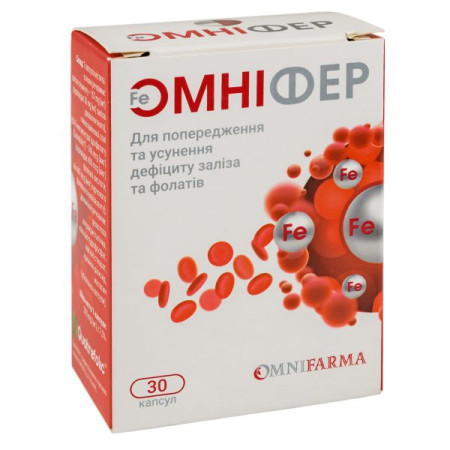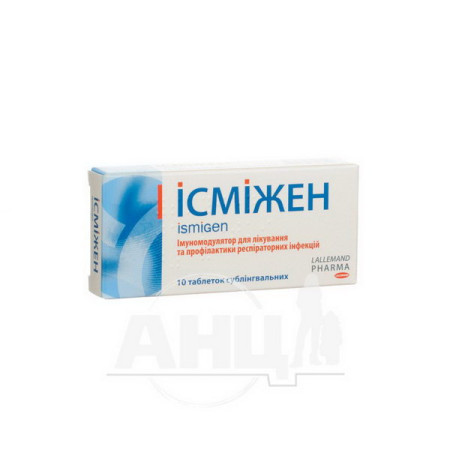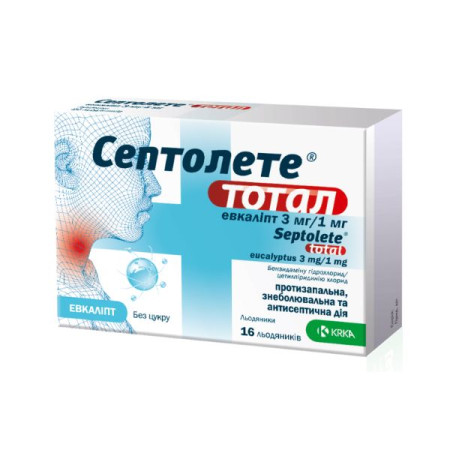Oxyfresh nasal spray 0.05% container 10 ml

Instructions for Oxyfresh nasal spray 0.05% container 10 ml
Composition
active ingredient: oxymetazoline;
1 ml of solution contains 0.5 mg of oxymetazoline hydrochloride;
Excipients: benzalkonium chloride; levomenthol; racemic camphor; eucalyptol; sodium dihydrogen phosphate, monohydrate; disodium edetate; propylene glycol; purified water.
Dosage form
Nasal spray.
Main physicochemical properties: colorless or slightly yellowish transparent liquid with a specific odor.
Pharmacotherapeutic group
Anti-edematous and other drugs for topical use in diseases of the nasal cavity. Sympathomimetics.
ATX code R01A A05.
Pharmacological properties
Pharmacodynamics.
Oxyfresh belongs to the group of local vasoconstrictors. Oxymetazoline has a sympathomimetic and vasoconstrictor effect, eliminating swelling of the nasal mucosa. Narrows the vessels at the site of application, reduces swelling of the nasal mucosa and upper respiratory tract, reduces nasal discharge. Restores nasal breathing. Elimination of swelling of the nasal mucosa contributes to the restoration of aeration of the paranasal sinuses and middle ear cavity, which prevents the development of bacterial complications.
Oxymetazoline has antiviral, anti-inflammatory, immunomodulatory and antioxidant effects. Thanks to this combined mechanism of action, clinical studies have proven a faster and more effective elimination of symptoms of acute rhinitis (nasal congestion, rhinorrhea, sneezing, malaise).
When applied topically to the nose in therapeutic concentrations, it does not irritate the nasal mucosa or cause hyperemia. The half-life is about 35 hours after administration. 2.1% of the drug is excreted by the kidneys, about 1.1% with feces.
Treatment with 0.05% oxymetazoline nasal spray significantly reduced the duration of the common cold compared with saline, from a mean of 6 days to 4 days (P < 0.001). A double-blind, parallel-group comparative study in 247 adult patients demonstrated a faster and more effective reduction in typical symptoms of acute rhinitis [nasal congestion, runny nose, sneezing, malaise (P < 0.05)] due to the combination of vasoconstrictor, antiviral, anti-inflammatory, and antioxidant effects of oxymetazoline.
Pharmacokinetics.
The duration of action of the drug is up to 12 hours.
In the case of intranasal administration, the amount absorbed may sometimes be sufficient to initiate systemic effects, for example in the central nervous and cardiovascular systems.
Additional data from pharmacokinetic studies in humans are not available.
Preclinical safety data.
Toxicity studies in dogs with repeated nasal administration of oxymetazoline did not reveal any safety risks for humans. The results of the in vitro bacterial mutagenicity test were negative. Data on the carcinogenicity of this medicinal product are currently unavailable. No teratogenic effects were observed in rats and rabbits. Doses higher than the therapeutic level were embryo-lethal or resulted in a decrease in fetal growth. In rats, inhibition of milk production was observed. There were no signs of impaired fertility.
Indication
- Acute rhinitis.
- Allergic rhinitis.
- Attacks of non-infectious vasomotor rhinitis.
- To restore drainage and nasal breathing in diseases of the paranasal sinuses of the nasal cavity, eustachitis associated with rhinitis.
- To eliminate swelling before diagnostic manipulations in the nasal passages.
Contraindication
Hypersensitivity to oxymetazoline, other adrenomimetics or to any of the components of the drug; atrophic rhinitis; increased intraocular pressure, especially in angle-closure glaucoma; pheochromocytoma; severe forms of cardiovascular diseases (arterial hypertension, ischemic heart disease), severe atherosclerosis, acute cardiovascular diseases or cardiac asthma, tachysystolic heart rhythm disorders, angina pectoris; metabolic disorders (hyperthyroidism, diabetes mellitus, porphyria); renal failure. Do not use after transsphenoidal hypophysectomy or other surgical intervention with opening the dura mater. Inflammation or damage to the skin around the nasal passages or nasal mucosa. It is contraindicated to use simultaneously with monoamine oxidase inhibitors and within 2 weeks after discontinuation of treatment with MAO inhibitors, as well as with other drugs that contribute to an increase in blood pressure. Prostatic hypertrophy.
Interaction with other medicinal products and other types of interactions
If the patient is taking other medications, it is recommended to consult a doctor before starting the use of Oxyfresh. Oxyfresh should not be used simultaneously with other local vasoconstrictors (by any route of administration), with other nasal decongestants, as well as with tricyclic antidepressants, maprotiline, since an increase in blood pressure is possible. Such combined use is possible only after consulting a doctor. In case of simultaneous use with monoamine oxidase inhibitors (MAO), an increase in blood pressure is possible. Oxyfresh should not be used simultaneously with MAO inhibitors or within 2 weeks after discontinuation of treatment with MAO inhibitors (see section "Contraindications"). The risk of developing arterial hypertension and arrhythmia increases with the simultaneous use of oxymetazoline with tricyclic antidepressants. Oxymetazoline may reduce the effectiveness of β-blockers, methyldopa or other antihypertensive drugs. In the case of simultaneous use of sympathomimetics and antiparkinsonian drugs, an increase in the toxic effect on the cardiovascular system is possible.
Application features
Long-term use and overdose of the drug should be avoided. Long-term use and overdose of a nasal decongestant may lead to a weakening of its effect (tachyphylaxis). In case of long-term use or overdose, treatment with this drug should be stopped immediately. Abuse of this drug may cause atrophy of the mucous membrane and reactive hyperemia with rhinitis medicamentosa, as well as damage to the epithelium and inhibition of its activity. After using the drug, special monitoring of the condition of patients with chronic rhinitis is necessary and in the case of using a spray to eliminate edema before diagnostic procedures. Doses higher than recommended should be used only under the supervision of a physician. The duration of continuous use of the drug should not exceed 7 days.
Persistent swelling of the nasal passages after the third day of using the drug may indicate the presence of a deviated nasal septum, purulent sinusitis, adenoids, allergic rhinitis, persistent bacterial infection, or other unrecognized diseases that require a doctor's consultation and specialized complex therapy.
The patient should consult a doctor before using this medicine if they have high blood pressure, cardiovascular disease, liver or kidney disorders.
Use during pregnancy or breastfeeding
Oxymetazoline has not been associated with adverse pregnancy outcomes. The drug should be used with caution in patients with arterial hypertension or with signs of reduced placental blood supply. Frequent or prolonged use of high doses may lead to reduced placental blood flow. During pregnancy, the drug may be used if, in the opinion of the doctor, the expected benefit to the mother outweighs the potential risk to the fetus/child. In this case, special caution is required; the recommended dosage should not be exceeded.
It is not known whether oxymetazoline passes into breast milk. Due to the lack of data, oxymetazoline should not be used during breastfeeding.
Ability to influence reaction speed when driving vehicles or other mechanisms
In case of prolonged use of the drug in doses exceeding the recommended ones, a general effect on the cardiovascular system cannot be excluded. In such cases, the ability to drive may be impaired.
Method of administration and doses
Adults and children aged 6 years and over
1 spray of Oxyfresh into each nasal passage 2–3 times a day. A single dose should not be used more than 3 times a day and for longer than 7 consecutive days. Doses higher than recommended should not be used.
Method of application
The spray mechanism works by pressing the container. Before first use, remove the protective cap, take the nasal spray in your hand and press the container several times until a stable aerosol mist is formed. Insert the edge of the container nozzle into each nasal passage and press the container sharply once. Inhale air through your nose while injecting. When injecting into the nasal cavity, do not tilt your head back or turn the container over. It is not recommended to use one container for several people to avoid the spread of infection. After use, clean the sprayer and close the container with the protective cap.
Children.
Oxyfresh should be used in children over 6 years of age.
Overdose
In case of a significant overdose of oxymetazoline or in case of accidental ingestion, the following symptoms may occur: mydriasis, nausea, vomiting, cyanosis, fever, cramps, tachycardia, arrhythmia, palpitations, cardiovascular failure, arterial hypertension, shortness of breath, respiratory disorders, pulmonary edema, cardiac arrest, increased sweating, agitation, fear, convulsions, pallor, miosis, hyposmia, hallucinations, mental disorders, physical discomfort. In extremely rare cases, central nervous system depression is observed, manifested by drowsiness, decreased body temperature, bradycardia, arterial hypotension, collapse, shock, respiratory disorders, apnea, loss of consciousness with possible development of coma.
Clinical manifestations of overdose in children include central nervous system (CNS) symptoms: convulsions and coma, hallucinations, bradycardia, apnea, hypertension alternating with hypotension.
Emergency measures: in case of suspected overdose with oxymetazoline, urgent hospitalization in the intensive care unit is necessary. Immediate administration of activated charcoal (absorbent), sodium sulfate (laxative) or gastric lavage (in case of overdose with a large amount of the drug) is recommended, since oxymetazoline can be rapidly absorbed. If arterial hypertension occurs, vasodilators (phentolamine, sodium nitroprusside) should be used. Vasopressors should not be used. Non-selective α-blockers can be used as an antidote. If necessary, measures can be taken to reduce body temperature, benzodiazepines are prescribed for excitement, anticonvulsant therapy is carried out with benzodiazepines and/or barbiturates. In severe cases, tracheal intubation and artificial ventilation of the lungs may be required.
Adverse reactions
With frequent and prolonged use, a burning sensation, tingling in the nose, flushing of the face, sneezing, and dryness of the mucous membrane may occur. Long-term continuous use of vasoconstrictor drugs may lead to tachyphylaxis or the development of rhinitis medicamentosa. In general, no serious side effects are expected.
The frequency of adverse reactions is classified as follows: very common (≥ 1/10), common (≥ 1/100 to < 1/10), uncommon (≥ 1/1,000 to < 1/100), rare (≥ 1/10,000 to < 1/1,000), very rare (< 1/10,000), not known (cannot be estimated from the available data).
From the cardiovascular system.
Rare: palpitations (feeling of heartbeat), tachycardia, increased blood pressure, heart pain.
Very rare: arrhythmias.
From the organs of vision.
Rare: eye irritation, discomfort or redness, blurred vision.
From the gastrointestinal tract.
Rare: nausea.
From the immune system.
Uncommon: hypersensitivity reactions (angioedema, rash, itching).
From the nervous system.
Very rare: headache, nausea, dizziness, sedation, drowsiness or insomnia, restlessness, nervousness, anxiety, tremor, increased fatigue, hallucinations (especially in children).
Musculoskeletal and connective tissue disorders.
Very rare: convulsions (especially in children).
On the part of the respiratory system, chest and mediastinum.
Rare: discomfort or irritation in the nose, mouth and throat, burning or dryness of the nasal mucosa, sneezing, nosebleeds. After the effect of the drug wears off, a feeling of severe nasal congestion (reactive hyperemia) may occur.
General condition.
Very rare: weakness.
Frequency unknown: tachyphylaxis (with prolonged use or overdose).
Reporting of suspected adverse reactions.
Reporting adverse reactions after the registration of a medicinal product is important. This allows monitoring of the benefit/risk ratio of the medicinal product. Medical and pharmaceutical professionals, as well as patients or their legal representatives, should report all cases of suspected adverse reactions and lack of efficacy of the medicinal product via the Automated Information System for Pharmacovigilance at the link: https://aisf.dec.gov.ua.
Expiration date
3 years.
Do not use the medicine after the expiry date stated on the packaging.
Storage conditions
Store at a temperature not exceeding 30 ° C. Keep out of the reach of children.
Packaging
10 ml in a polyethylene container with a spray stopper and a tamper-evident cap in a cardboard pack.
Vacation category
Without a prescription.
Producer
Joint Ukrainian-Spanish enterprise "Sperco Ukraine".
Location of the manufacturer and address of its place of business.
21027, Ukraine, Vinnytsia, 600-anniversary St., 25.
There are no reviews for this product.
There are no reviews for this product, be the first to leave your review.
No questions about this product, be the first and ask your question.

















